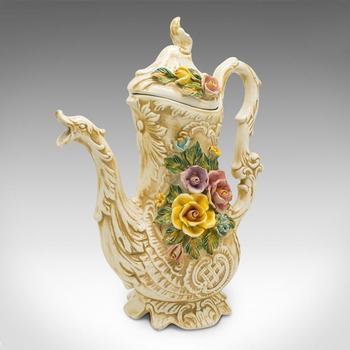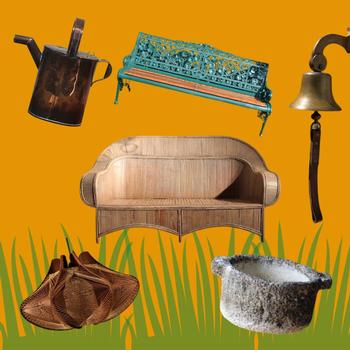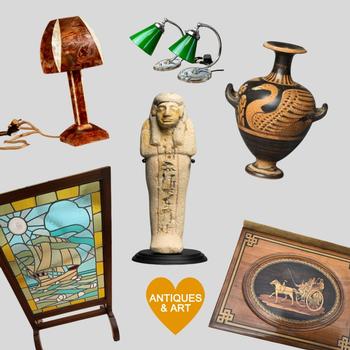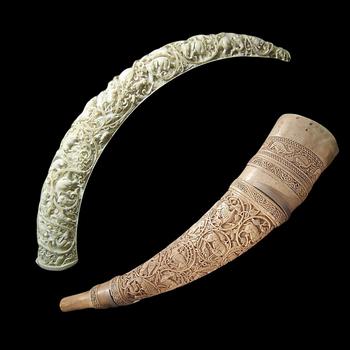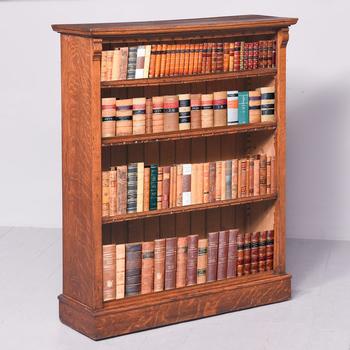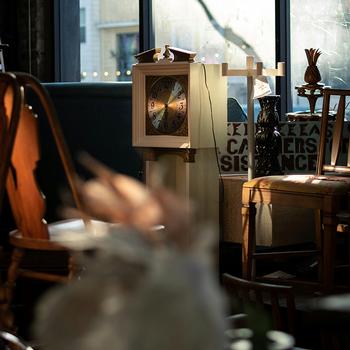featured item

outstanding quality antique victorian carved oak barometer Read more
Antiques Magazine
The many reasons to love antique 17th Century English furniture
In today’s modern era of furniture – constructed cheaply with plywood, chip board and MDF – there is something to be said for well-made antique furniture.
Antiques.co.uk’s founder, Iain Brunt, shares his thoughts on why he is a champion of furniture that was built to last: antique 17th century oak furniture.
A Brief History of Time: Antique Grandfather Clocks
You may remember them simply from visiting elder relatives’ houses, or even stately homes. After all, they are the embodiment of the term, ‘antique’, in many people’s minds. But have you ever stopped to wonder how we ended up with our beloved ‘grandfather’ clocks? And the surprising reason why we call them ‘grandfather’?
Find answers to these, as we chart the rise and fall of grandfather clocks.
Important update for sellers: taking art or cultural property in the EU
An important update for antiques dealers and sellers in the UK regarding taking art or cultural property into the EU after 28 June 2025. Here's what you need to know.
Antiques for your Edwardian Summer Garden Party inspiration
Summer is finally here…nearly. And with it comes everything the Great British garden party has to offer: drinks on the terrace, flowers, sunshine (hopefully), all served with a touch of class.
If there was one thing that the Edwardians did well, it was gardens. It was during the 1900s and 1910s that Gertrude Jekyll was prolific in her garden designs, favouring irises and all manner of blousy flowers. Architects like Sir Edwin Lutyens were also hard at work, designing orangeries and formal gardens all over the UK.
So today we’re looking at antiques for your summer garden party inspiration - mostly featuring Edwardian pieces, but some from other eras too.
Flowers in antiques: why our lives would be dull without them
Chelsea Flower Show is nearly upon us, so what better time to take a look at the relationship between antiques and flowers?
Antiques.co.uk Founder Iain Brunt explores why flowers have been an integral part of many styles of antique design throughout the ages – and why life would be so much less fun without them.
7 Antique and Vintage finds to get your garden ready for summer
Our expert inspiration to help you get your garden summer-ready with these seven different types of antique and vintage pieces.
The History of Antique Collecting
With news that two historic City of London markets seem destined to close forever – after over 800 years of continual trading – the antiques market continues to flourish, both online and in our towns and villages.
But unlike the meat and fish of Smithfield and Billingsgate, with antiques you’ll find that every item has a story – and every corner of an antiques shop hides a potential treasure. There’s always a thrill in the search, no matter what you're looking for.
As we pondered the closure of these historically significant London markets, and read up about their history, it got us thinking: how did antique collecting start – and how long has it been going on for?
Important update for antique dealers: extension of the Ivory Act 2018
The Centre for International Trade has shared key updates about the extension of species to the Ivory Act 2018 – one of the toughest bans on ivory sales in the world – which applies to all antique dealers.
Urgent request for all dealers: do you have any of these antiques you could sell?
A large interior designer is looking for these specific types of antique furniture pieces. Here's how to get your items in front of them.
Why collect antique maps? The alternative to GPS and SatNav
There is a much more organic way of getting around with our phones, Google Maps, GPS or car satnav.
Antiques.co.uk's founder, Iain Brunt, explores the upside to collecting antique maps, and how, like record players or writing letters, maps can help us connect more organically to the real world.
The most INCREDIBLE antique finds ever made
January is a fantastic time for clearing out old items from storage. Maybe you have paintings sitting in your attic, or old ceramic pots in the garden which you've never liked?
Many people just want to get rid of what they consider to be old junk - it ends up at thrift stores or charity shops, where just occasionally, the buyer finds out that it's worth a fortune!
Here are the top five most incredible antique discoveries ever made (and how you can make some money from your unwanted antiques).
Antiques & Vintage: what could be most collectable in 2025?
As we enter 2025, the world of antiques continues to captivate collectors and enthusiasts alike. Each year brings shifting trends, influenced by changing tastes, nostalgia, and even technological advancements.
If you’re curious about which antiques are set to be the most collectable this year, here’s a guide to help you get started.
Five reasons to try selling an antique in 2025
As the new year begins, many of us feel inspired to declutter, refresh our spaces, and set new financial goals. If you have antiques collecting dust, now might be the perfect time to let them go. Selling an antique isn't just about making space - it’s about rediscovering hidden value and sharing a piece of history.
Here are five compelling reasons why you should consider selling an antique this new year - and how you can really easily get started.
Come and spend Christmas with Antiques.co.uk
We reflect on why antiques are such a wonderful Christmas gift, both to your loved one - and yourself.
Read on for a Christmas message from Antiques.co.uk's founder, Iain Brunt.
Countdown to Christmas: last minute antique and vintage Christmas gift ideas
As we begin the countdown to Christmas, time is running out to ship larger, bulkier items in time for the big day.
That means smaller, easier to ship pieces become a more attractive option if you're still on the lookout for what is fast becoming a last minute gift!?
If you're not sure where to start - and to avoid battling the hectic high street shops on Christmas Eve - we've listed our top ten smaller antique and vintage gifts that you can get delivered to you in time for Christmas.
Important updates for international shipping - including antiques and vintage
Starting 12 November 2024, U.S. Customs & Border Protection (CBP) will strictly enforce new regulations requiring precise descriptions for goods in Air Cargo Advanced Screening (ACAS) for shipments to the U.S. or transiting via the U.S.
Shipments with vague or incomplete descriptions may face delays at the point of origin.
The seven best Christmas gift ideas for kids: antique and vintage finds
Wondering what to buy your children for Christmas this year?
Read our seven best Christmas gift ideas for kids - and why buying an antique gift for them can make the past a GREAT present.
Seven Best Antique and Vintage Christmas Gift Ideas for Her
Another Christmas is on the horizon – yet the last one seems like it was only yesterday.
That means only one thing: special Christmas gifts must be sought out for her – your wife, partner, girlfriend, mother, sister. Some find it relatively easy to think up another round of excellent gift ideas for her, but many of us aren’t quite so inspired.
So where do you start, if you’re looking for unique Christmas gift ideas for the special woman (or women?!) in your life?
If you’re reading this article, then you’re in the right place...
The seven best antique and vintage gift ideas for him this Christmas
It can be exceedingly difficult trying to come up with gift ideas for your husband, partner, boyfriend or father at Christmas.
Often they just seem to already have everything they want already, or sometimes they don’t appear to have any particular interests to buy for (and going to the pub doesn’t really count as a ‘hobby’).
Many fathers will tell you that they just don’t need anything this year – that’s about as helpful as the two word replies they usually send to your text messages.
So what do you do? Read our seven best antique and vintage gift ideas for men this Christmas, of course!
Rare Christmas Antique and Vintage Gift Ideas
At this time of year it can be nigh on impossible to decide what’s best in terms of a Christmas gift for loved ones. Some of us struggle with this problem every year. It can be extremely difficult for those who seemingly have everything, or have no discernible hobbies to speak of.
Figuring out what to buy someone can turn into the nightmare before Christmas!
So if you're looking for antique and vintage Christmas gifts to delight and surprise, go no further - here are this year's recommendations from Antiques.co.uk.
Written by Gill Jones




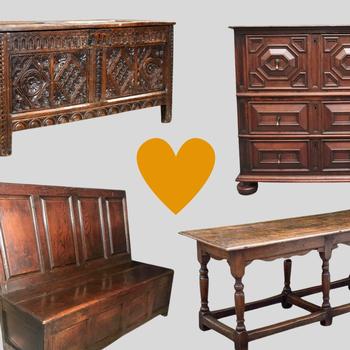
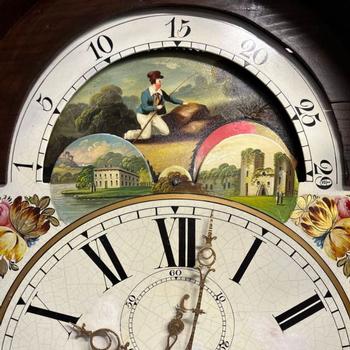
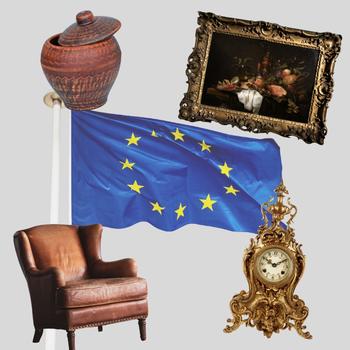
.jpg)
